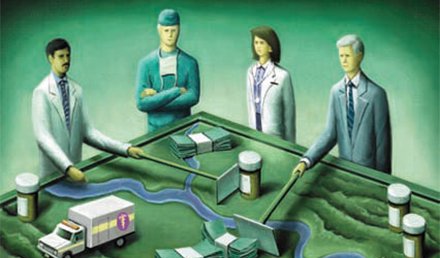DAVID STERN, MD (Practice Velocity) Q.Are you able to bill the following two codes together with a modifier: 17110 (Destruction [e.g., laser surgery, electrosurgery, cryosurgery, chemosurgery, surgical curettement], of benign lesions other than skin tags or cutaneous vascular proliferative lesions; up to 14 lesions) 17111 (15 or more lesions)? – Question submitted by Julie Briggs A.These are mutually exclusive codes. You can use 17110 if the physician destroys 14 or less benign lesions (usually warts). …
Read MoreAbstracts In Urgent Care: June, 2008
Prevalence of UTI in Children Key point: Prevalence is highest in infants younger than 3 months, girls with fever, and uncircumcised boys. Citation: Shaikh N, Morone NE, Bost JE, et al. Prevalence of uri- nary tract infection in childhood: A meta-analysis. Pediatr Infect Dis J. 2008; 27:302-308. During the past decade, many studies have assessed the preva- lence of urinary tract infection (UTI) in children with fever. In- vestigators conducted a meta-analysis of data from …
Read MoreClinical Challenge: June, 2008
The patient is an 80-year-old man who presents to urgent care with low back pain of two weeks duration. He is hemodynamically stable and has a normal neurological exam. His personal medical history reveals hypertension, for which he is being treated. Blood pressure is 140/80, pulse 63. View the x-ray taken (Figure 1) and consider what your diagnosis and next steps would be. Resolution of the case is described on the next page.
Read More
June 2008
Buyer Self-interest as a Factor in Occupational Health Sales
Avoiding something negative rather than buying on appeal appears to be a very real part of buyer decision-making. Indeed, with sufficient probing, most prospects harbor inner fears that can be successfully addressed during the sales process. Buyers of urgent care occupational health services generally have two motivations: helping their company save money and making their own life easier. Most occupational health sales emphasize the former: reduce injury/illness incidence and associated lost work time and save …
Read MoreSend Lawyers, Guns and Money: Asset Protection for Providers and Urgent Care Owners
JOHN SHUFELDT, MD, JD, MBA, FACEP Although I am sure I have been described as an Excitable Boy, God knows I am no Warren Zevon. However, ol’ Warren correctly described the mindset of most providers and business owners when their personal assets are attached to a judgment. This article tackles the complex subject of asset protection. When an acquaintance of mine (an attorney) learned that he was going to be named in a suit alleging …
Read More
Loss Management/Injury Management and Rehabilitation
Urgent message: A loss management/injury management product line will further broaden a practice’s range of services (and revenue sources) while also creating a platform for referral of new patients. Donna Lee Gardner, RN, MS, MBA As discussed previously in JUCM, a clinic that seeks to broaden its clinical services—and, thus, its revenue streams—by offering comprehensive urgent care occupational medicine (UCOM) services will provide access to five distinct, but complementary, product lines: • health surveillance • …
Read More
Minding Your (Urgent Care) Ps and Qs
Urgent message: Appropriate attention to place, product, price, promotion, people, and quality help ensure the right approach to facilitating the success of your practice. Alan A. Ayers, MBA, MAcc, Experity Bartenders in British pubs have a custom of reminding eager patrons to “mind their Ps and Qs”—to watch how many pints and quarts they consume, so as to avoid creating a tab they cannot pay. To assure a satisfactory return on their investment, urgent care …
Read More
Diabetic Emergencies in the Urgent Care Setting
Urgent message: Patients with glucose levels either too high or too low often require immediate, potentially life-saving interventions in the urgent care setting. These patients are often found to be diabetic. Allan F. Moore, MD, Nicolas Abourizk, MD, Jeffrey Collins, MD, MA Diabetes is a common chronic disease affecting approximately 7% of the United States population. Of these individuals, 17.5 million carry a diagnosis of diabetes and over 6 million are undiagnosed. An estimated 54 …
Read MoreVisioning for the Future of Urgent Care
Lee A. Resnick, MD, FAAFP The Urgent Care Association’s spring convention in New Orleans, April 28–May 2 culminated an incredible year for our association. The convention was attended by 660 urgent care practitioners and administrators, and represented an incredible show of strength for our industry, the discipline of urgent care medicine, and UCA. As witnessed by those of you who have attended many of our recent conventions, UCA has achieved remarkable growth in only four …
Read More